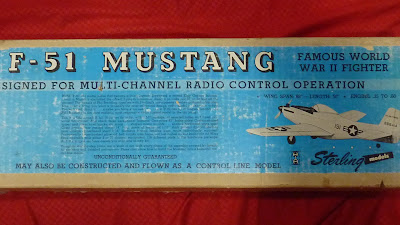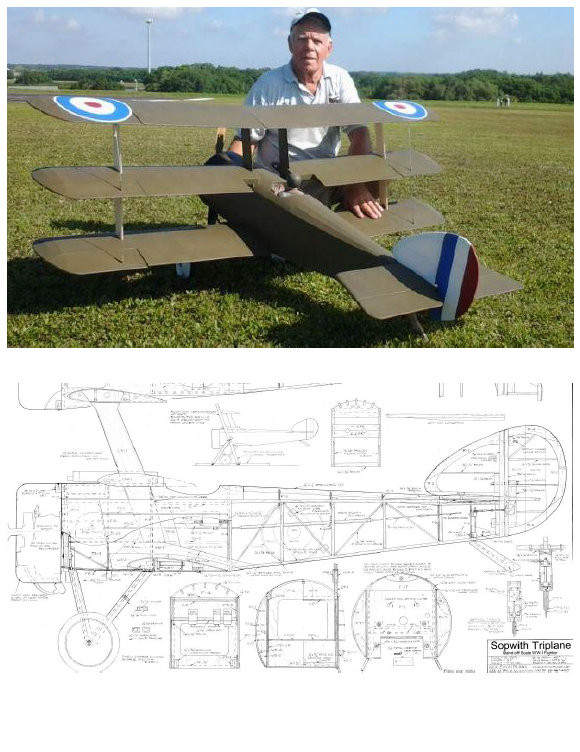Seagull Models have come out with this 1/8 scale Mosquito and I have to admit, I like it, so much so, that I bought one. You never know when these things will be discontinued. The outline is surprisingly good. It is modeled after a restored example, KA114. The real airplane was built in Toronto and restored by Avspecs, in New Zealand. As such, it carries markings from 487 squadron, Royal New Zealand Air Force ( EG-Y ).
The kit comes with mechanical retractable landing gear ( ~95° ), featuring both up and down locks to eliminate servo load. The wheels that come with the kit measure 3-7/8" diameter and are extremely light at 1.9 oz for the pair and yet they are also quite firm. How do they do that?
The retract units weigh in at 12.5 oz
The oleos have a stroke of 13/16". I took it apart to inspect the springs. They measure 2-1/4" in length and 0.281" in outside diameter, with 0.032" wire. They are compressed about 3/4" when fully extended. I found that it took about 7 lbs to start to compress the oleos of 1 retract unit, with nearly 20 lbs when fully compressed. This means that the oleos are likely not compressed at all on the ground and any compression will only serve to bounce the airplane back into the air. Perhaps removing 1 of the springs will make it more realistic. On the real airplane, the strut is extended 8" with no weight on the wheels and could be compressed up to 5" at empty weight.
The tailwheel is 1-3/8" and uses a 7/8" long extension spring that begins to actuate with about 2 lbs of force and is fully extended at 5 lbs.
The instrument panel does resemble that of a Mosquito. The rest of the interior was typically painted interior green. Many scale details can be added.
There are issues with the published center of gravity being too far aft. This makes the airplane pitch sensitive and easy to stall, upon which, one wing will drop. Moving the CG forward and/or reducing the elevator travel will help to prevent the stall. Most people seem to be aiming for 130 mm back from the leading edge at the wing root, instead of the recommended 150 mm. Also, the model does not have scale radiator intakes in the wing roots, which may act as stall strips, causing the root to stall first on the full size airplane. Perhaps adding stall strips on the model might help in that regard.
A study of the wing geometry at 1/8.125 scale indicates that the 1/4 MAC is 362 mm forward of the trailing edge, which coincides nicely with 130 mm back from the leading edge on the model.
Engine pods with thick firewall, reinforced with triangle stock and about 2° right thrust built in.
The weight of various components, out of the box
Left Wing 23.6 oz
Right Wing 23.9 oz
Left Engine pod 6.8 oz
Right Engine pod 6.8 oz
Left Nacelle ( fiberglass ) 9.4 oz
Right Nacelle ( fiberglass ) 10.0 oz
Fuel tanks ( both ) 3.8 oz
Engine Mounts and bolts ( both ) 3.8 oz
Fuselage ( including tail, canopy and antenna ) 41.0 oz
Guns ( 4 ) 1.3 oz
Pushrods 3.4 oz
Wing tube ( 25 mm OD, 23 mm ID, 765 mm OAL ) 5.3 oz
Retract units ( both ) 12.5 oz
Main Wheels ( both ) 1.9 oz
Tailwheel 1.8 oz
Spinners with screws ( both ) 5.0 oz
Pilot and Seat ( don't recommend using ) 3.2 oz
Hardware package 4.1 oz
Miscellaneous (
Total 167.6 oz ( 10 lbs 7.6 oz )
Plus the following items, not included in the kit
Servos ( 10 ), as shown in the instructions
- Spectrum A6000 ( 6 ), flight controls 9.0 oz
- Hitech HS-311 ( 2 ), throttles 3.0 oz
- Hitech HS 5495BH ( 2 ), retracts 3.2 oz
Engines ( 2 ) Saito 82 32.6 oz
Propellers ( 2 ) Master Airscrew 12 x 8 3-blade ?
Receiver ( 0.25 oz ), battery and switch ( 0.3 oz ) ?
Glue ?
Ballast ?
Total Ready to Fly ( dry ), more than 215.4 oz ( 13 lbs 7.4 oz )
Seagull recommends the following control surface movements,
Ailerons 15 mm low, 25 mm high, up and down
Elevator 15 mm low, 25 mm high, up and down
Rudder 20 mm low, 30 mm high, left and right
For comparison, using the same travel as the real airplane
Ailerons 26 mm up ( 26.5° ), 11 mm down ( 11.5° ) ( 19 mm average )
Elevator 23 mm up ( 21.5° ), 14 mm down ( 12.5° ) ( with CG near 25% MAC )
Rudder 40 mm left and right ( 26° )
The flaps should be set to 45°.
Due to the weight of the airplane, it will be flying about twice the scale speed, for a given angle of attack. As a result, the roll rate will be double that of the full size airplane and so a low rate on the ailerons of about 50% should produce a scale rate of roll. The Futaba 7C radio, that I will use, allows for differential aileron programming, with the second aileron servo plugged into channel 7.
A page out of The Mosquito Manual
A decal sheet is provided with markings for F-Freddy. The "Buzz Buggy" nose art belongs on a C-47
For those wanting to improve the scale looks of the model, there are a few things that can be done. I've narrowed it down to a few items, in order of importance.
1. Scratch build a decent cockpit.
2. Replace the roundels with those from Major Decals sheet 200 ( except the fin flash )
- they are too small, too light in colour and not placed properly on the wings
- Wing roundels should be 6.75" in diameter, placed about 13-3/8" inboard from the wingtip, between the leading edge and the aileron, with about a 1/8" gap.
3. Replace the spinners with 3 blade versions
4. Different code letters and serial number
5. Try to fit scale 5.5" main wheels, or at least something larger than what is supplied
- this will require surgery to move the struts farther apart and maybe cutting into the wing
The fuselage roundels would be "Medium" size, or 4.5" in 1/8 scale
Serial Number Detail
The above information came from this book.

.JPG)
.jpg)















































